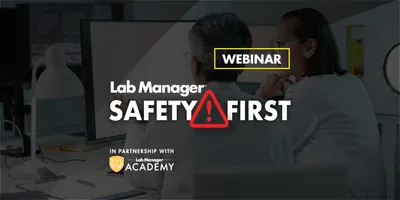Isolation or Containment Without Classified Space
Glove boxes are enclosed, controlled environment chambers that serve as isolation or containment spaces for laboratory work. Most glove boxes operate in isolation mode, under positive pressure, to protect samples or experiments from the environment. More costly containment boxes shield operators from the process.
Brian Coy, director of marketing at Coy Laboratory Products (Grass Lake, MI), defines a glove box as “any enclosed, anaerobic work area that provides glove-only access.” Thus, level-3 biosafety cabinets fall into this category but fume hoods do not.
Glove boxes are a mainstay of biology labs, but Mr. Coy says that demand from the biofuels industry has been brisk with renewed interest in alternative energy. Biofuel projects begin with anaerobic bacteria, which are grown in controlled environments boxes and assayed for their ability to break down organic matter and produce hydrocarbon fuels under nitrogen atmosphere. “This uptick in demand was not due to any technologic breakthrough; it was purely a result of new funding,” Mr. Coy notes.
Containment vs. isolation
Mike Buckwalter, publications director at Terra Universal (Fullerton, CA), cautions potential customers to be aware of the differences between containment and isolation and make sure they don’t confuse one for the other. “They are not interchangeable,” he says. In the glove box marketplace, Terra’s strength has traditionally been isolation units. But the company has received orders for sophisticated containment boxes as well. One was for conducting experiments on a highly pathogenic, anaerobic strain of tuberculosis. Terra provided the anaerobic environment in a containment-type design in which all manipulations occurred under negative pressure.
Mr. Buckwalter says his company has seen a recent resurgence in orders for glove boxes, with a trend toward simpler, lower-cost systems vs. the more technologically sophisticated boxes that were previously popular. The technology dropoff “could be due to the bad economy, where large R&D projects or even manufacturing campaigns falling into the capital expenditure category have been mothballed or postponed.”
Containment is significantly more expensive than isolation for several reasons. For most isolation applications, where the object under study is not pathogenic, leakage from the box to the lab occurs without dire consequences. In the case of the TB application, a leak could sicken or kill operators. Isolation systems also require a strategy to vent the airborne contents of the glove box to house exhaust in case of a breach or other emergency.
Sophisticated containment systems often employ PLC (programmable logic control) systems for automating glove box operation. Many also sport graphical human-machine interfaces that list pressure, humidity, and gas composition and depict which valves are open and closed. “Containment involves a lot of valve actuation, pressure monitoring, and airflow management to assure safe conditions,” adds Mr. Buckwalter.
Keeping them clean
Glove box sterilization is critical for most applications involving organisms, whether pathogenic or not. Glove boxes tend to stay cleaner than simpler tissue culture hoods, but when they become contaminated, they are harder to clean.
Periodic sterilization prevents the viral and bacterial contamination of cell cultures and animal subjects and reduces the likelihood of subsequent infection or cross-contamination in the case of infectious agents.
Hydrogen peroxide vapor is the most efficient way to sterilize a glove box, as the gas penetrates into every corner of the unit. However, the process requires hard-plumbing a gas tank to the side of the glove box, and the gas cylinder must be replaced periodically.
Peroxide is highly caustic, which is bad news for rubber seals and gaskets inside the glove box, and especially dangerous for operators. For these reasons, buyers who desire sterilization are increasingly specifying ultraviolet- C (UV-C) disinfection. UV-C is a short-wavelength irradiation that includes the germicidal 253.7 nm wavelength. UV-C is also hard on rubbers and plastics, but since almost any material, including glass, is a suitable UV shield, irradiation poses no threat to operators. Unfortunately, unlike hydrogen peroxide, UV disinfection is a line-of-sight technique that only disinfects areas that are illuminated.
Specialized containment apps
In contrast to Terra, Coy Laboratory Products has experienced greater demand for containment-type boxes, particularly for formulating chemotherapy agents, to support bioterrorism research, and for law enforcement agencies that handle suspected bioterrorism agents.
The chemotherapy angle is an offshoot of the recently revised USP 797, a standard for formulating pharmacies promulgated by the U.S. Pharmacopoeia. The de facto regulation states that pharmacists who mix sterile drugs at their place of business must do so either within a laminar flow hood inside a clean room, or in a much less expensive glove box.
One such box, specifically designed for non-biohazard drugs, is called a compounding aseptic isolator. A different glove box, the compounding aseptic containment isolator, is reserved for highly potent or toxic drugs.
Thus the two principal models designed for formulating pharmaceuticals recapitulate the larger glove box industry’s main themes of containment vs. isolation.
| Glove Boxes: If you’re looking to purchase a new or pre-owned glove box, visit labx.com to browse current listings. If you have a question about your current laboratory equipment, visit labwrench.com to connect with other users. Ask questions, post answers and share insights on equipment and instruments. |








